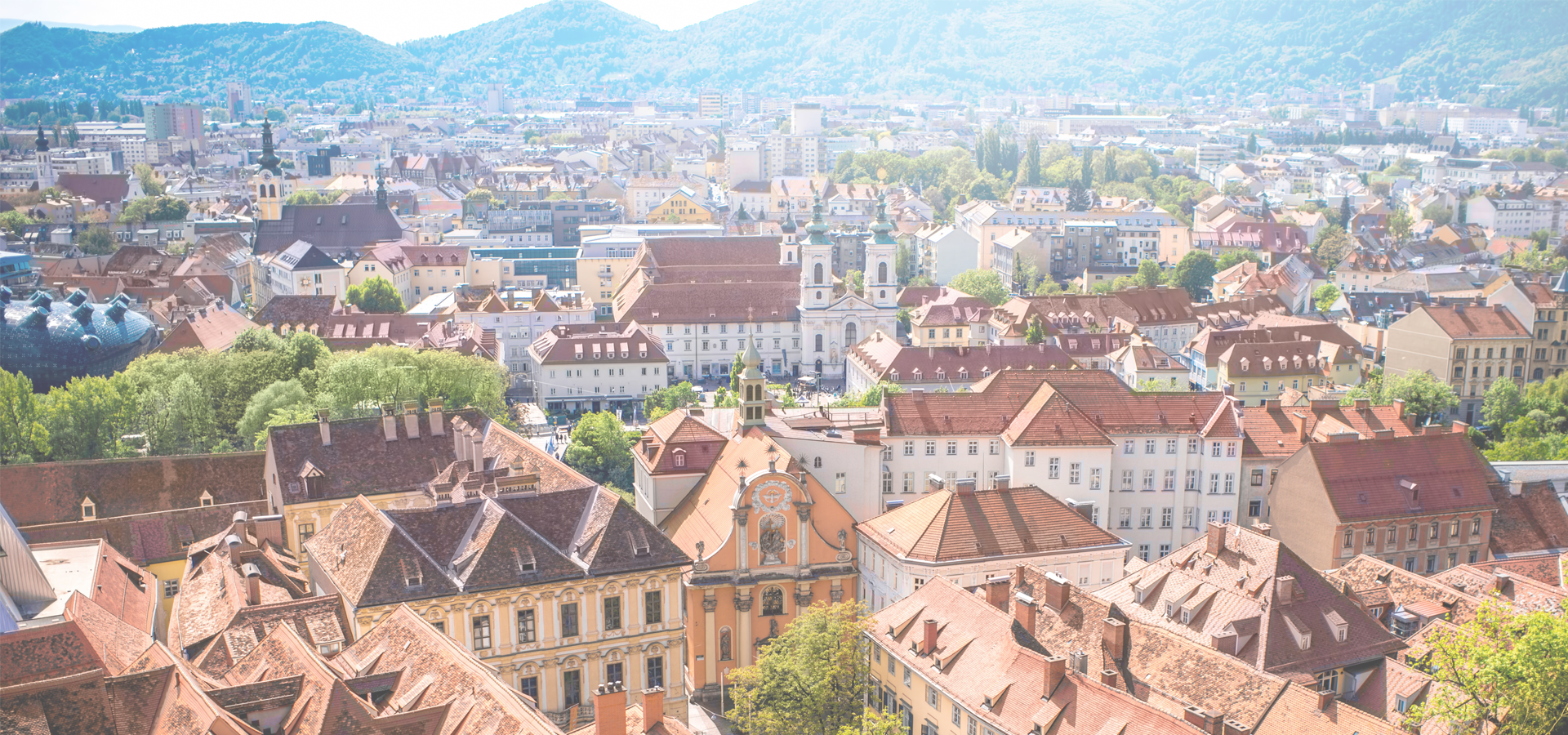Styria, Austria
🇦🇹 Styria is a state (Bundesland) in the south-east of Austria. With an area of 16,401 km² (6,332 sq mi), Styria is the second largest state of Austria, after Lower Austria. Styria is bordered to the south by Slovenia, and clockwise, from the south-west, by the Austrian states of Carinthia, Salzburg, Upper Austria, Lower Austria, and Burgenland. The state capital is Graz.
Geography • The term "Upper Styria" (Obersteiermark) refers to the northern and north-western parts of the province (districts Liezen, Murau, Murtal, Leoben, Bruck-Mürzzuschlag). • The term "Western Styria" (Weststeiermark) is used for the districts west of Graz (Voitsberg, Deutschlandsberg, western part of the district Leibnitz). Because of the similar landscape with hills, valleys, wine and culture, the region in western Styria is also called "Styrian Tuscany". • The districts east of Graz (Weiz, Hartberg-Fürstenfeld, and Südoststeiermark) are referred to as "Eastern Styria" (Oststeiermark).
The western and eastern parts of the district Graz-Umgebung (literally, surroundings of Graz) may or may not be considered parts of West and East Styria, respectively. The southern parts of the Duchy of Styria, which formed part of former Yugoslavia and later Slovenia (with the exception of World War II), were (and sometimes colloquially still are) referred to as "Lower Styria" (Untersteiermark; Slovene: Štajerska).
History Styria was inhabited by Celtic tribes. After its conquest by the Romans, the eastern part of what is now Styria was part of Pannonia, while the western one was included in Noricum. During the Barbarian invasions, it was conquered or crossed by the Visigoths, the Huns, the Ostrogoths, the Rugii, and the Lombards. Slavs under the domination of the Avars settled in the valleys around 600. At the same time, Bavarians under Frankish domination began to expand their area to the south and east, ultimately absorbing the Slavic population.
In 1180, Styria separated from the Duchy of Carinthia and became a Duchy of its own; in 1192 the Austrian Duke Leopold V also became Duke of Styria. Later, Styria formed the central part of Inner Austria.
Styria developed culturally and economically under Archduke John of Austria between 1809 and 1859.
In 1918, after World War I, it was divided into a northern section (forming what is the current Austrian province), and a southern one, called Lower Styria, now inhabited by Slovenians, and which was annexed to Yugoslavia, and later became part of Slovenia. As a result of the turbulence of two world wars, the German-speaking population of Lower Styria, which had been concentrated in the cities, migrated out of the region or was expelled.
Economy The province's gross domestic product (GDP) was 49.6 billion € in 2018, accounting for 12.9% of Austria's economic output. GDP per capita adjusted for purchasing power was 35,400 € or 118% of the EU27 average in the same year.
There has been a shift from the manufacturing sector towards the service sector in Styria. This has had negative consequences for the industrial regions of upper Styria, which have suffered a steady decline in population in recent years.
In 2004, Styria had the strongest economic growth rate in Austria at 3.8%—mainly due to the Graz area, which saw strong economic growth that year and has continued to grow in economic and population terms since then.
Styria is home to more than 150 clean technology companies of which one dozen are world technology leaders in their field. The revenue of Styrian cleantech companies totals €2.7 billion. This equals 8 percent of the gross regional product (GRP) and is one of the highest concentrations of leading clean technology companies in Europe. The companies have an average (real) growth rate of 22 percent per year—well above the worldwide cleantech market growth of 18 percent per year. The region created roughly 2,000 additional green jobs in 2008 alone.
The Formula One Austrian Grand Prix has been held in the region, first at the Zeltweg Airfield in 1964 and then at the Osterreichring from 1970 to 1987. The sport returned to the circuit, now redesigned and rebranded as the A1-Ring, from 1997 to 2003. Formula One once again returned to the circuit, now renamed the Red Bull Ring, in 2014 and has been held at the track every year since. The COVID-19 pandemic saw the 2020 Formula One calendar massively revised, resulting in the Red Bull Ring becoming the first circuit to host consecutive Formula One World Championship Grands Prix, with the first round running under the Austrian Grand Prix name and the second held as the Styrian Grand Prix. This continued in 2021.
Administrative divisions The province is divided into 13 districts (Bezirke), one of them a statutory city. There are 286 municipalities: Statutory city • Graz; Districts • Bruck-Mürzzuschlag • Deutschlandsberg • Graz-Umgebung • Hartberg-Fürstenfeld • Leibnitz • Leoben • Liezen (with the subdistrict Gröbming) • Murau • Murtal • Südoststeiermark • Voitsberg • Weiz.
Europe/Vienna/Styria

The Styria State has a population of over 1,246,576 people. For the location of Styria see: Graz.
To set up a UBI Lab for Styria see: https://www.ubilabnetwork.org Twitter: https://twitter.com/UBILabNetwork
🇫🇷 Saint-Nazaire 47.274
🇨🇭 Affoltern am Albis 47.283
🇦🇹 Deutschlandsberg 15.2
🇮🇹 Barcellona Pozzo di Gotto 15.221
🇵🇱 Gorzów Wielkopolski 15.242
Locations Near: Styria 15.1667,47.25
🇦🇹 Leoben 15.095,47.38 d: 15.4
🇦🇹 Bruck an der Mur 15.267,47.417 d: 20
🇦🇹 Deutschlandsberg 15.2,46.8 d: 50.1
🇦🇹 Leibnitz 15.533,46.767 d: 60.5
🇦🇹 Feldbach 15.883,46.95 d: 63.7
🇦🇹 Hartberg 15.949,47.3 d: 59.3
Antipodal to: Styria -164.833,-47.25
🇹🇴 Nuku'alofa -175.216,-21.136 d: 16964.7
🇵🇫 Papeete -149.566,-17.537 d: 16428.5
🇦🇸 Pago Pago -170.701,-14.279 d: 16308.8
🇼🇸 Apia -171.76,-13.833 d: 16244
🇺🇸 Hilo -155.089,19.725 d: 12504.1
🇺🇸 Maui -156.446,20.72 d: 12410.6
🇺🇸 Maui County -156.617,20.868 d: 12396.1
🇺🇸 Wailuku -156.505,20.894 d: 12392